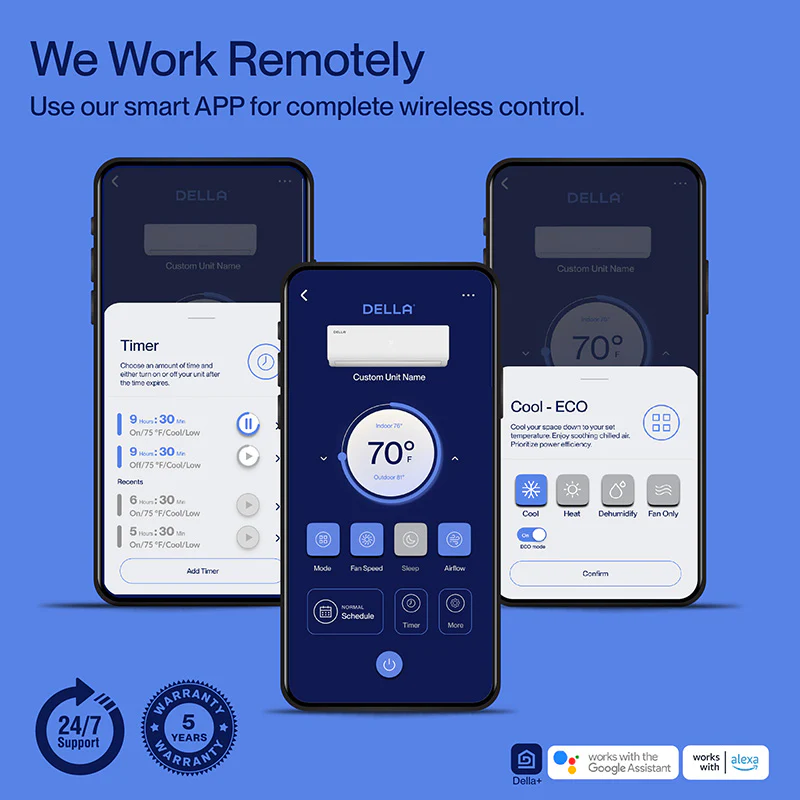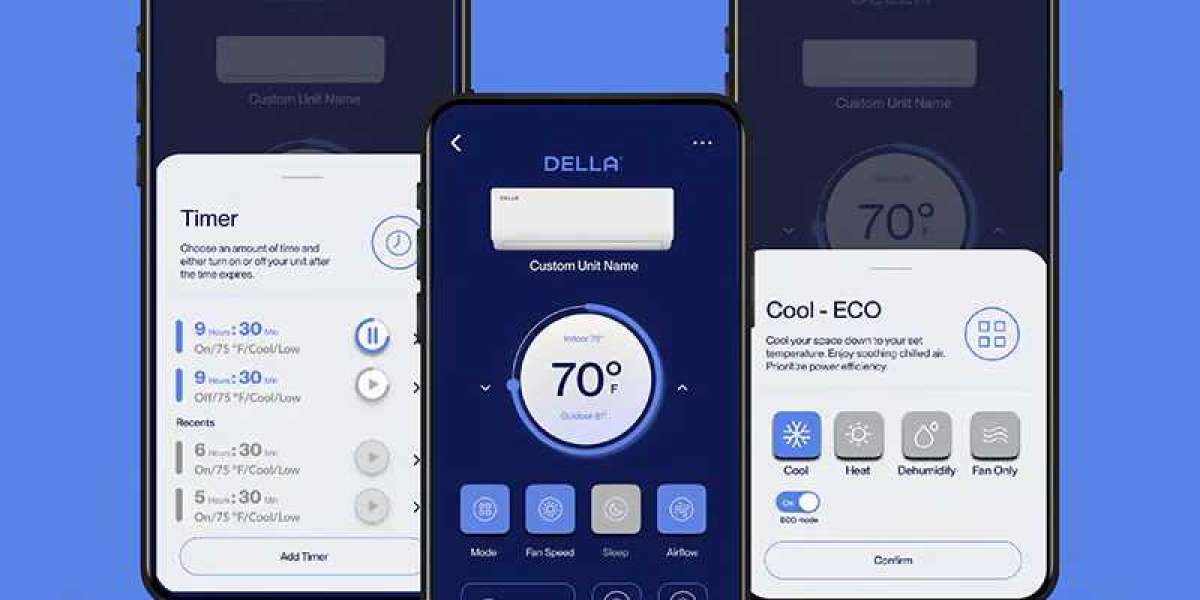Installing a quad zone mini split system in your home is a smart way to achieve personalized comfort in multiple rooms while optimizing energy efficiency. A quad-zone system allows you to control the temperature in four different areas independently, offering tailored heating and cooling to suit the specific needs of each space. However, installing such a system involves careful planning and consideration to ensure that it operates effectively and efficiently. This article outlines the key factors to consider when installing a quad zone mini split system.

1. Understanding the Basics of a quad zone mini split System
A quad zone mini split system consists of one outdoor unit connected to four indoor air handlers. Each air handler serves a different room or zone within your home, allowing for individual temperature control. Unlike traditional HVAC systems that use ducts to distribute conditioned air, mini split systems deliver air directly to the designated zones, reducing energy losses associated with ductwork.
1.1. How a Quad-Zone System Works
The outdoor unit houses the compressor and condenser, which are responsible for heating and cooling the refrigerant. This refrigerant is then circulated through pipes to the indoor air handlers, where it absorbs or releases heat, depending on the mode of operation. Each indoor unit can be controlled separately, providing the flexibility to maintain different temperatures in different rooms based on occupancy, usage, and personal preference.
2. Assessing Your Home’s Heating and Cooling Needs
Before installing a quad zone mini split system, it’s important to assess your home’s specific heating and cooling requirements. Each zone’s needs will vary based on factors such as room size, insulation, window placement, and the climate in your region.
2.1. Performing a Load Calculation
A load calculation helps determine the amount of heating or cooling needed for each zone. This calculation considers the size of the room, ceiling height, number of windows, insulation quality, and other factors that affect temperature. An accurate load calculation ensures that each indoor unit is properly sized to meet the demands of its respective zone, preventing issues such as underperformance or excessive energy consumption.
2.2. Identifying Priority Zones
Determine which areas of your home require the most consistent temperature control. For example, living rooms, bedrooms, and home offices may need more precise climate control than less frequently used areas like guest rooms or storage spaces. Prioritizing zones helps optimize the placement and capacity of the indoor units.
3. Choosing the Right Equipment
Selecting the right quad zone mini split system involves choosing equipment that matches your home’s needs and your budget. The outdoor unit should have the capacity to handle the combined demands of all four zones, while the indoor units should be appropriately sized for the rooms they serve.
3.1. BTU Capacity
BTU (British Thermal Unit) capacity indicates the amount of heat an air conditioner can remove from a space in one hour. Each indoor unit should be selected based on the BTU capacity required for the room it will serve. For instance, a small bedroom may require a 6,000 BTU unit, while a larger living room might need a 12,000 BTU unit. Ensure that the outdoor unit’s total capacity can support the combined BTU needs of all four indoor units.
3.2. Energy Efficiency
Look for systems with high SEER (Seasonal Energy Efficiency Ratio) and HSPF (Heating Seasonal Performance Factor) ratings. These ratings measure the efficiency of the system in cooling and heating modes, respectively. Higher ratings indicate better energy efficiency, leading to lower utility bills and a reduced environmental impact.
3.3. Smart Features and Connectivity
Modern mini split systems often come with smart features such as Wi-Fi connectivity, allowing you to control the system remotely via a smartphone app. This feature adds convenience and flexibility, enabling you to adjust the temperature, set schedules, and monitor energy usage from anywhere.
4. Planning the Installation
Proper planning is crucial for a successful installation. Consider factors such as the placement of indoor and outdoor units, the routing of refrigerant lines, and the electrical requirements of the system.
4.1. Indoor Unit Placement
The placement of indoor units affects both the efficiency and comfort provided by the system. Units should be installed in locations that allow for even air distribution throughout the room. Common placements include high on the wall, near the ceiling, or in the ceiling itself. Avoid placing units where they could be obstructed by furniture or curtains, as this can impede airflow and reduce effectiveness.
4.2. Outdoor Unit Location
The outdoor unit should be installed in a location that provides adequate airflow and is easily accessible for maintenance. It should be placed on a level surface, preferably on a concrete pad or mounting brackets, to prevent vibrations and noise. Additionally, consider the proximity of the outdoor unit to the indoor units, as this will affect the length of the refrigerant lines and the overall efficiency of the system.
4.3. Routing of Refrigerant Lines
Refrigerant lines connect the outdoor unit to the indoor units, carrying the refrigerant that cools or heats the air. These lines should be routed in a way that minimizes their length and avoids sharp bends, as longer or convoluted lines can reduce efficiency. Ensure that the lines are properly insulated to prevent energy losses and condensation issues.
4.4. Electrical Considerations
quad zone mini split systems require a dedicated electrical circuit to power the outdoor unit and all connected indoor units. Ensure that your home’s electrical panel can accommodate the additional load and that the installation meets local electrical codes. It’s recommended to have a licensed electrician handle the electrical work to ensure safety and compliance.
5. Cost Considerations
The cost of installing a quad zone mini split system includes the price of the equipment, installation labor, and any additional materials such as refrigerant lines and electrical components. While the initial investment may be significant, the long-term savings on energy bills and the increased comfort provided by the system can make it a worthwhile investment.
5.1. Comparing Quotes
Before proceeding with the installation, obtain quotes from multiple HVAC contractors. This allows you to compare pricing, service quality, and warranties. Ensure that the quote includes all aspects of the installation, including any necessary permits, electrical work, and post-installation testing.
5.2. Rebates and Incentives
Check for any available rebates or incentives that can reduce the cost of your quad zone mini split system. Many utility companies offer rebates for installing energy-efficient HVAC systems, and there may also be federal or state tax credits available.
6. Maintenance and Longevity
Proper maintenance is key to ensuring the longevity and performance of your quad zone mini split system. Regularly clean or replace the filters, check for refrigerant leaks, and schedule annual inspections with a qualified technician. With proper care, a well-maintained mini split system can last 15 to 20 years.
6.1. Routine Maintenance
Routine maintenance includes cleaning the indoor unit filters, checking the outdoor unit for debris, and inspecting the refrigerant lines for leaks or damage. Many systems also come with self-diagnostic features that alert you to potential issues, allowing for timely repairs.
6.2. Professional Servicing
In addition to routine maintenance, schedule professional servicing at least once a year. A qualified technician can check the refrigerant levels, clean the coils, and ensure that all components are functioning correctly. This helps prevent breakdowns and extends the lifespan of your system.
Conclusion
Installing a quad zone mini split system is an effective way to achieve customized comfort in your home. By carefully considering your home’s heating and cooling needs, choosing the right equipment, planning the installation, and factoring in costs and maintenance, you can enjoy the benefits of a highly efficient and versatile climate control system. Whether you’re upgrading your current HVAC setup or building a new home, a quad zone mini split offers the flexibility, efficiency, and comfort needed to create the perfect indoor environment.








